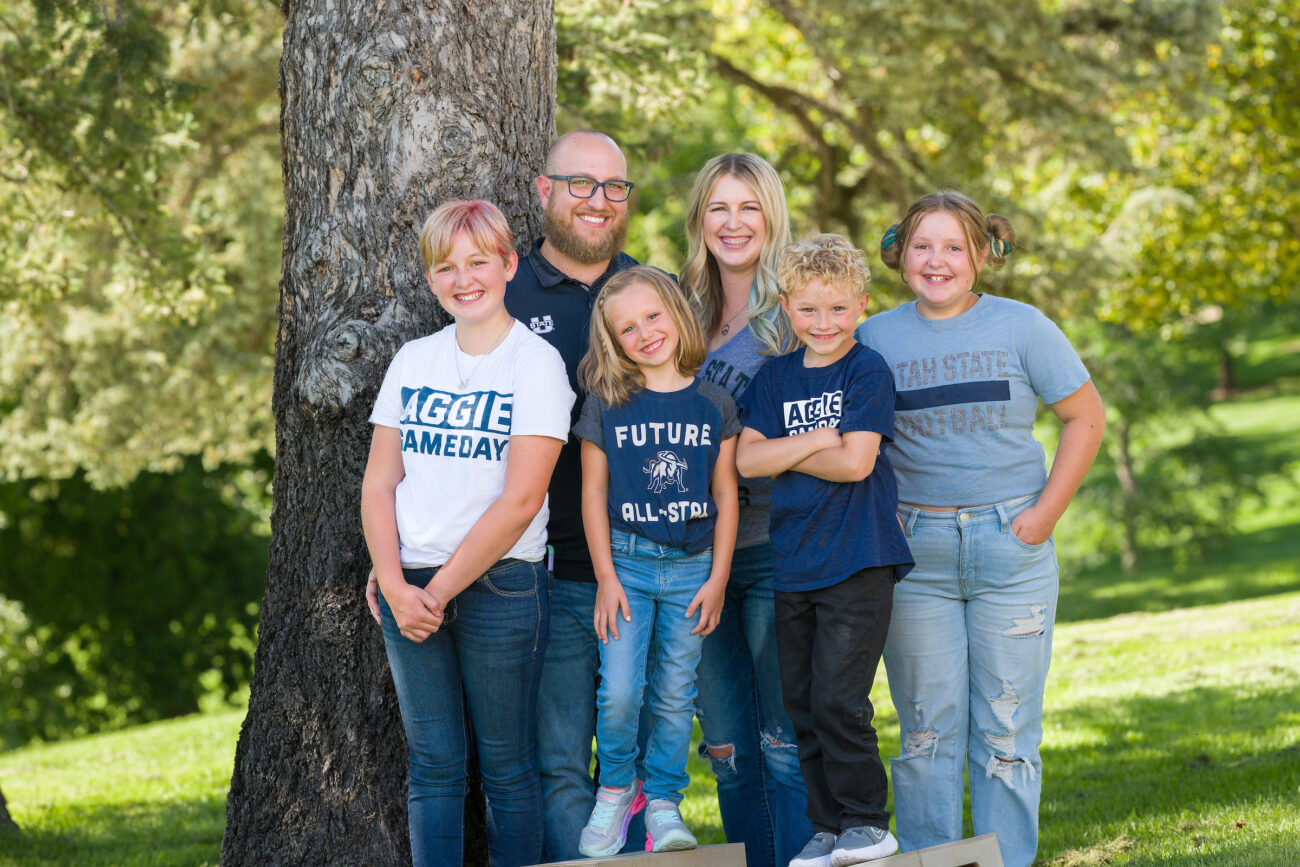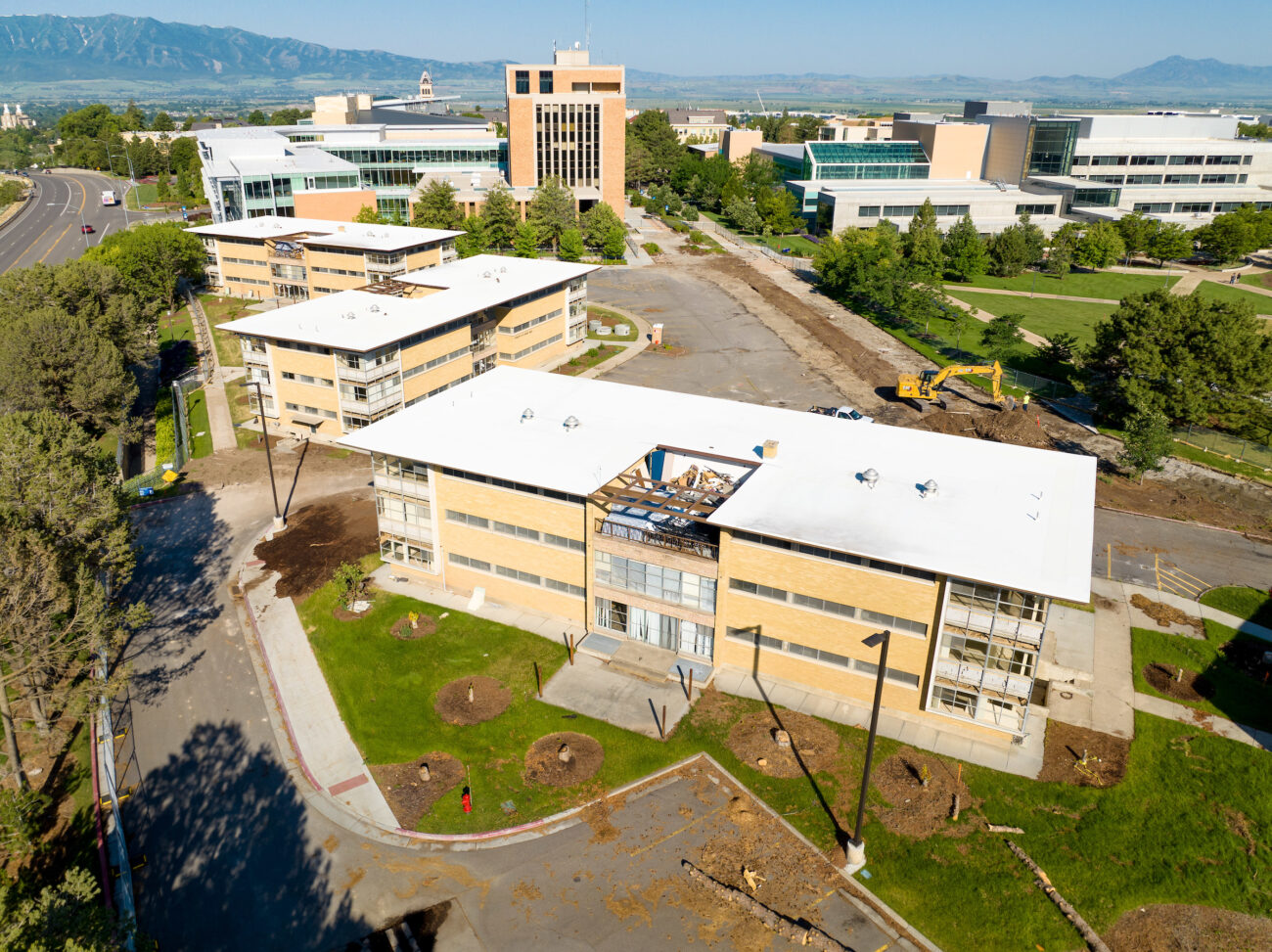Targeting Treatments
When Mitchell Heap used to return home to Star Valley for family events, “I’d start losing people at, ‘So, the other day I was doing chemistry,’” he admits.
That’s not the case anymore. Especially when Heap, ’20, a bioengineering major, points out that some of his research could help make antiviral drugs more effective.
“We’re trying to come up with some- thing that helps out society and makes things a little bit better,” says Heap, who is in the process of deciding where to attend medical school.
Prior to the arrival of SARS-CoV-2 in the United States, Heap and fellow bioengineering student Andrew Kjar were investigating self-assembling polymer compounds and using them to encapsulate antiviral drugs to deliver therapeutics to infected cells and prevent oxidation of the drug prior to delivery. The goal is to increase efficacy and reduce side effects associated with antivirals that have high toxicity profiles.
In simpler terms, they researched the possibility that carrier molecules could transport antiviral drugs to infected cells.
“We’re talking about really small things that are on a molecular scale, our method allows us to dissolve these poorly soluble things in water without them clumping together essentially,” Heap explains. “The applications are pretty widespread.”
A 2020 Goldwater Scholar, Kjar’s motivation is seeking better methods of treating cytomegalovirus infection, a source of infant deafness that can lead to death.
“Current treatments have unfavorable side effects,” Kjar says. “We aim to reduce these effects by supplementing the current antiviral treatments with a nanoparticle excipient composed of quercetin (a plant pigment) and Pluronics (an amphiphilic carrier).”
Kjar presented this work in Philadelphia in 2019 at the Biomedical Engineering Society (BMES) conference, providing an opportunity to share the USU team’s research and learn of rapid advances in biomedical devices and therapies. Following the conference, Kjar worked with Ian Wadsworth, a bioengineering master’s student, and took the most promising nano-formulations and tested them in cell culture antiviral assay against cytomegalovirus, a herpes virus that is the leading cause of non-hereditary birth defects.
But COVID-19 abruptly changed some of that focus.
“Last spring, the research team transitioned aspects of this work toward enhancing the activity of antivirals such as Remdesivir against SARS-CoV-2 through collaborations with Dr. Brett Hurst at USU’s Institute for Antiviral Research,” says David Britt, professor of bioengineering.
Kjar is continuing his research on treatment of cytomegalovirus. The pursuit is a personal one after watching some friends deal with the loss of their 10-year- old son, who was born with a congenital cytomegalovirus infection.
“I’m currently working with the same nanocarrier in a more realistic cell culture model—inner ear cells—and we will move towards animal models in the future,” he says. “The physicochemical characterization that Mitch did helps us understand what modes of action the system may be exploiting. This same nanocarrier might be valuable for other, similar antiviral treatments.”
For Heap, the closing down of the main USU campus last March forced him to adapt and learn new methods of presenting research, he says. “On the positive side, COVID-19 did help give my work a sense of purpose in the larger community. The drug delivery method I had been researching has shown certain antiviral applications.”
“Although not implicated in CO- VID-19 treatment, I began to realize that I was part of a greater whole, which was trying to solve the world’s health challenges. I began to realize that the research process I had been learning is the same as the ones being used by those trying to find a treatment method for COVID-19. Realizing that I was not so different from these researchers is very comforting and has helped give me a sense of belonging among them.”





